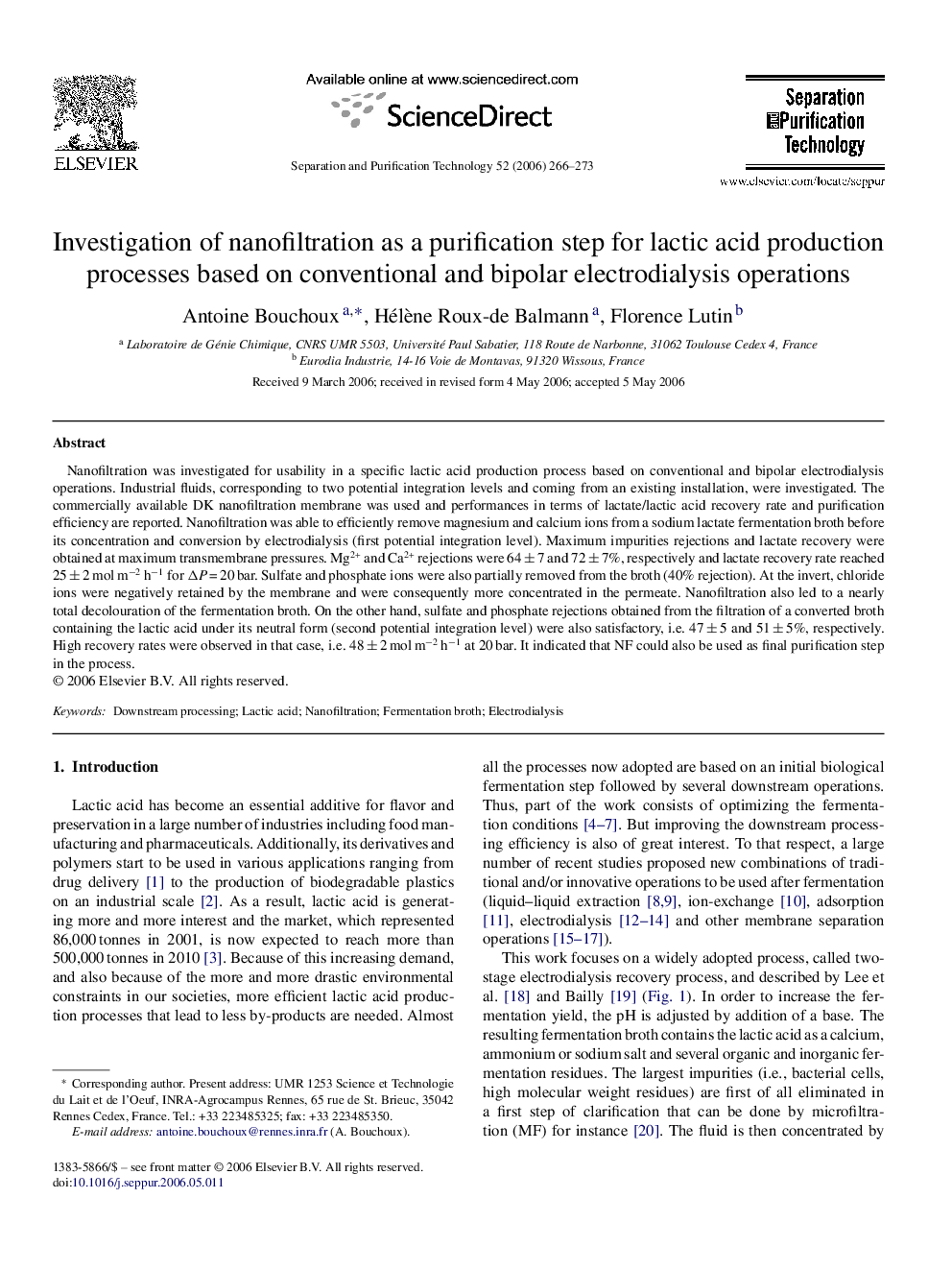| Article ID | Journal | Published Year | Pages | File Type |
|---|---|---|---|---|
| 644101 | Separation and Purification Technology | 2006 | 8 Pages |
Nanofiltration was investigated for usability in a specific lactic acid production process based on conventional and bipolar electrodialysis operations. Industrial fluids, corresponding to two potential integration levels and coming from an existing installation, were investigated. The commercially available DK nanofiltration membrane was used and performances in terms of lactate/lactic acid recovery rate and purification efficiency are reported. Nanofiltration was able to efficiently remove magnesium and calcium ions from a sodium lactate fermentation broth before its concentration and conversion by electrodialysis (first potential integration level). Maximum impurities rejections and lactate recovery were obtained at maximum transmembrane pressures. Mg2+ and Ca2+ rejections were 64 ± 7 and 72 ± 7%, respectively and lactate recovery rate reached 25 ± 2 mol m−2 h−1 for ΔP = 20 bar. Sulfate and phosphate ions were also partially removed from the broth (40% rejection). At the invert, chloride ions were negatively retained by the membrane and were consequently more concentrated in the permeate. Nanofiltration also led to a nearly total decolouration of the fermentation broth. On the other hand, sulfate and phosphate rejections obtained from the filtration of a converted broth containing the lactic acid under its neutral form (second potential integration level) were also satisfactory, i.e. 47 ± 5 and 51 ± 5%, respectively. High recovery rates were observed in that case, i.e. 48 ± 2 mol m−2 h−1 at 20 bar. It indicated that NF could also be used as final purification step in the process.
